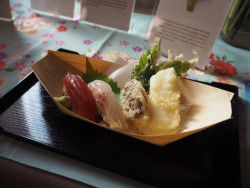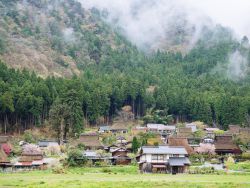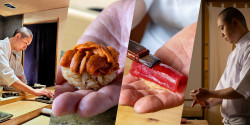
January 25, 2018
Life in Full Color
Kumagai Morikazu’s Retrospective at the MOMAT
Kumagai Morikazu (1880-1977) is widely known for his bright and colorful paintings of animals, plants and other everyday scenes. During his long career, however, Kumagai experimented with shadow, darkness, perspective and color; only arriving at his signature vibrant, animated style late in his career. With two hundred paintings, sketches, diaries and documents on display at The National Museum of Modern Art, Tokyo’s Kumagai retrospective, the exhibit creates a sweeping narrative of one man’s devotion to depicting the beauty of life.
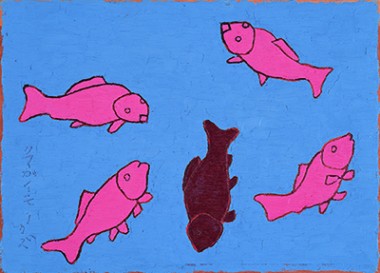
“Kumagai Morikazu: The Joy of Life” is curated chronologically and naturally starts with Kumagai’s early works. The painter was initially inspired by the French fauvism movement—defined by strong brushstrokes and vibrant colors—as well as Japanese western-style painter, Kuroda Seiki, who was Kumagai’s teacher at Tokyo Fine Arts School (now Tokyo University of the Arts). During this early period, Kumagai painted many people, landscapes and city scenes featuring shadows, dark colors and vivid brushstrokes. Still painting within the confines of Western artistic trends of the time, Kumagai masterfully used shadow to create depth within his work.
Before he found his iconic style, Kumagai’s middle years focused on landscapes and nudes. MOMAT’s exhibition features a series of nudes and landscapes depicted with a variety of color palettes and perspectives, and varying degrees of realism. Although the curators try to draw a connection between the undulating forms of Kumagai’s female nudes and the soft curves of his landscapes, it is hard to see any immediate connection between these themes, other than perhaps the coincidence of a few rolling hills that resemble the female form. What is clear, however, is how Kumagai’s experimentation in this phase led to his iconic style. His work begins to contain more vibrant colors and less realistic portrayals. These paintings also features less depth and perspective.
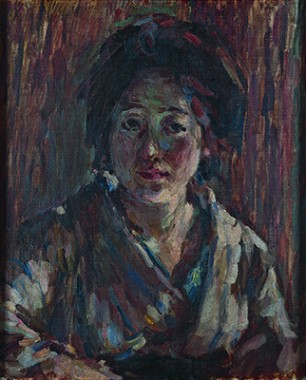
Kumagai Morikazu Museum of Art
A good half of the exhibit is devoted to Kumagai’s later, more famous works. It was not until decades later—beginning sporadically in the 1940’s, and then more definitively in the 1950’s—that Kumagai zeroed in on his iconic style. Characterized by red outlines, saturated colors, everyday landscapes and living creatures, Kumagai’s style has a sense of flatness and two-dimensionality reminiscent of animation. By foregoing perspective, Kumagai created a world in which he could focus on the everyday scenes of butterflies, water drops and cats that populate these later paintings. Some of these paintings are compared, by the curators, to masterpieces by 20th century Western artists. While Kumagai was undoubtedly inspired by artists like Matisse, the attempt to make direct comparisons between specific Kumagai paintings and Western masterpieces comes across as clumsy and fatuous. Regardless, the curatorial team has assembled a vast number of these famous later works. It is easy to see both why Kumagai’s later works remain popular today, and why his earlier, ultimately less distinctive paintings, remain largely unknown.
As a representative of modern Japanese painting, Kumagai is hardly known outside of Japan. Even within Japan, perhaps rightfully so, he is known almost entirely for the work from his later years. This exhibition presents the opportunity to catch a glimpse of the wide arc of Kumagai’s career, a rare look at one of the grandfathers of Japanese modern art. It is also an opportunity to get a sense for the history of Western-style Japanese painting in the 20th century. Determined to paint all the beauty he saw in the world, in the face of the sorrow inherent to life, Kumagai’s work remains both relatable and vibrant forty years after his death.
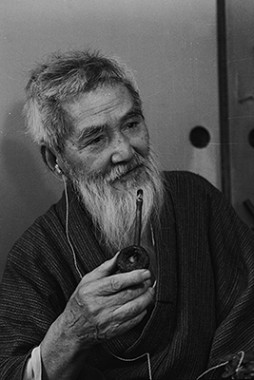
Kumagai Morikazu: The Joy of Life
December 1, 2017 – March 21, 2018. http://kumagai2017.exhn.jp/
The National Museum of Modern Art, Tokyo, 3-1 Kitanomaru-koen, Chiyoda-ku, Tokyo 102-8322 http://www.momat.go.jp/english/am/
Admission: Adults ¥1,400; College / University students ¥900; High school students ¥400; Middle School and under free of charge.
Prices include admission to MOMAT Collection Exhibit.
Hours: Tues. – Thurs. & Sun.: 10:00 AM-5:00 PM (admission until 4:30 PM),
Fri. & Sat. 10:00 AM-8:00 PM (admission until 7:30 PM)
[Closed] Mon. (open on holiday Mon. and closed on the following days)

